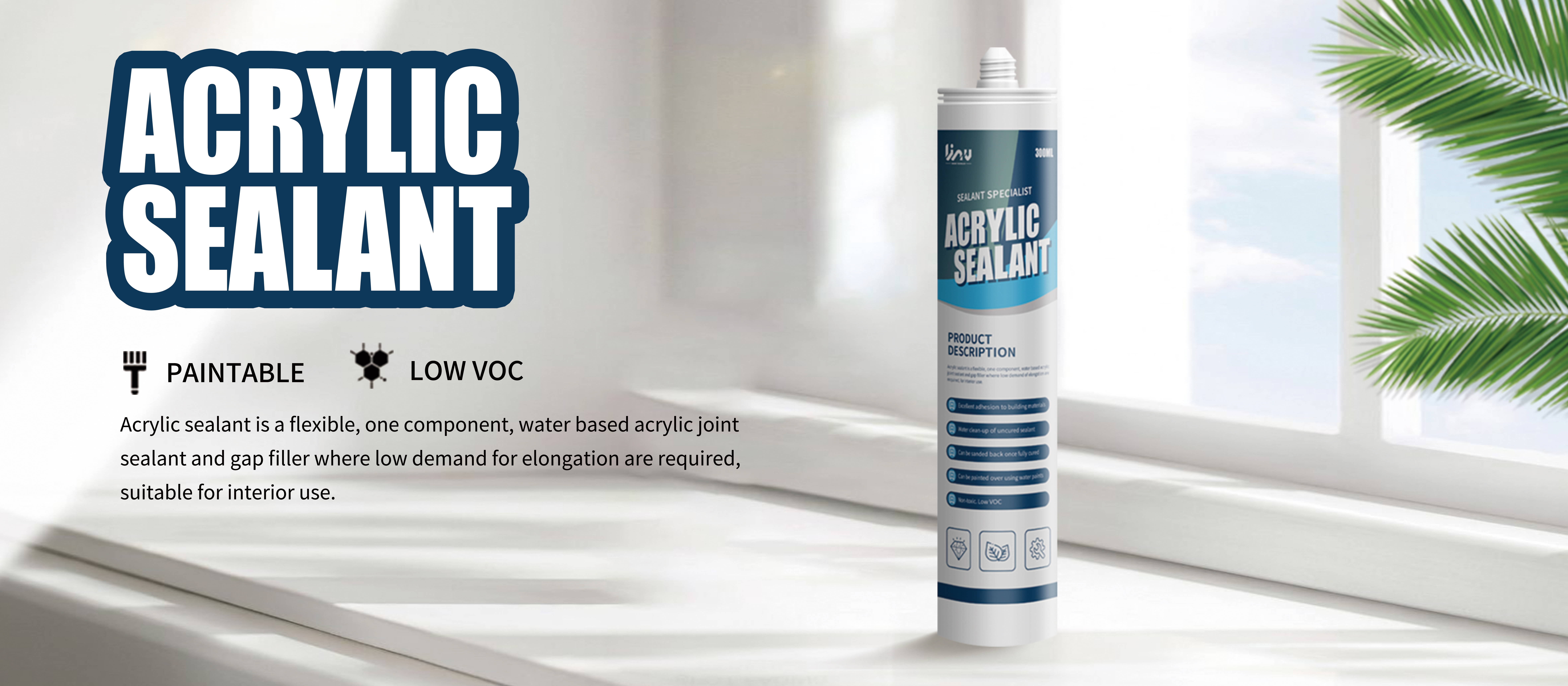Safe and trustworthy products and services. Request a quote.
Views: 0 Author: Site Editor Publish Time: 2025-04-05 Origin: Site










As the core material of modern architecture, concrete structures are often exposed to complex environments, making them susceptible to issues such as joint cracking and water infiltration due to temperature fluctuations, humidity cycles, and dynamic stress. Research by the American Concrete Institute (ACI) indicates that most structural deterioration stems from water penetration, freeze-thaw cycles, and stress-induced cracking. These issues not only compromise aesthetic appeal but also weaken the durability and load-bearing capacity of concrete. Choosing the right sealant is crucial for extending the lifespan of concrete.

Composition and Curing Mechanism. Acrylic sealants are made from methyl methacrylate monomers and acrylic ester copolymers. They undergo a polymerization reaction triggered by moisture in the air, forming an elastic sealing layer. The carboxylic acid groups in the molecular chain provide excellent adhesion and weather resistance.
UV Resistance. Acrylic sealants can withstand UV radiation for extended periods. Without yellowing or chalking, it can be suitable for outdoor concrete joints.
Chemical Resistance. They exhibit resistance to corrosive media such as ozone and acid rain, making them ideal for industrially polluted areas.
Functional Advantages
Elastic Sealing. Capable of accommodating the displacement caused by thermal expansion and contraction of concrete.
Environmental Friendliness: Solvent-free formulation with no irritating odors, suitable for indoor confined spaces.
Ease of Application. Can be applied on damp surfaces, with a fast curing speed that shortens construction time.
Acrylic sealants can quickly repair concrete cracks, forming a waterproof barrier.
Underground Projects: Used in basement and tunnel joints to reduce underground water infiltration pressure.
Military Installations: ACI studies show that acrylic coatings can reduce freeze-thaw damage on military aircraft runways by 40%.
Energy Infrastructure: Effectively blocks radiative water infiltration in concrete structures at nuclear power plants.
Roads and Bridges: Used in bridge expansion joints to enhance driving comfort and structural safety.
Swimming Pools and Bathrooms: Acrylic sealants can be used to treat pool body joints, preventing cracking and water seepage.
How to Use Silicone Sealant: A Step-by-Step Guide for Best Results
What Is Silicone Sealant Used For? 10 Key Applications for Home and Industry
The Advantages of MS Floor Adhesive Over Traditional Floor Adhesives
Innovations and Strategic Moves Shape the Future of Fire Rated Acrylic Sealants
Wood Filler: The Ultimate Solution for Wood Repair & Surface Enhancement
Silicone Sealants Comparison: Acid vs. Alkoxy vs. Oxime Types
The advantages and characteristics of no more nail Ms polymer